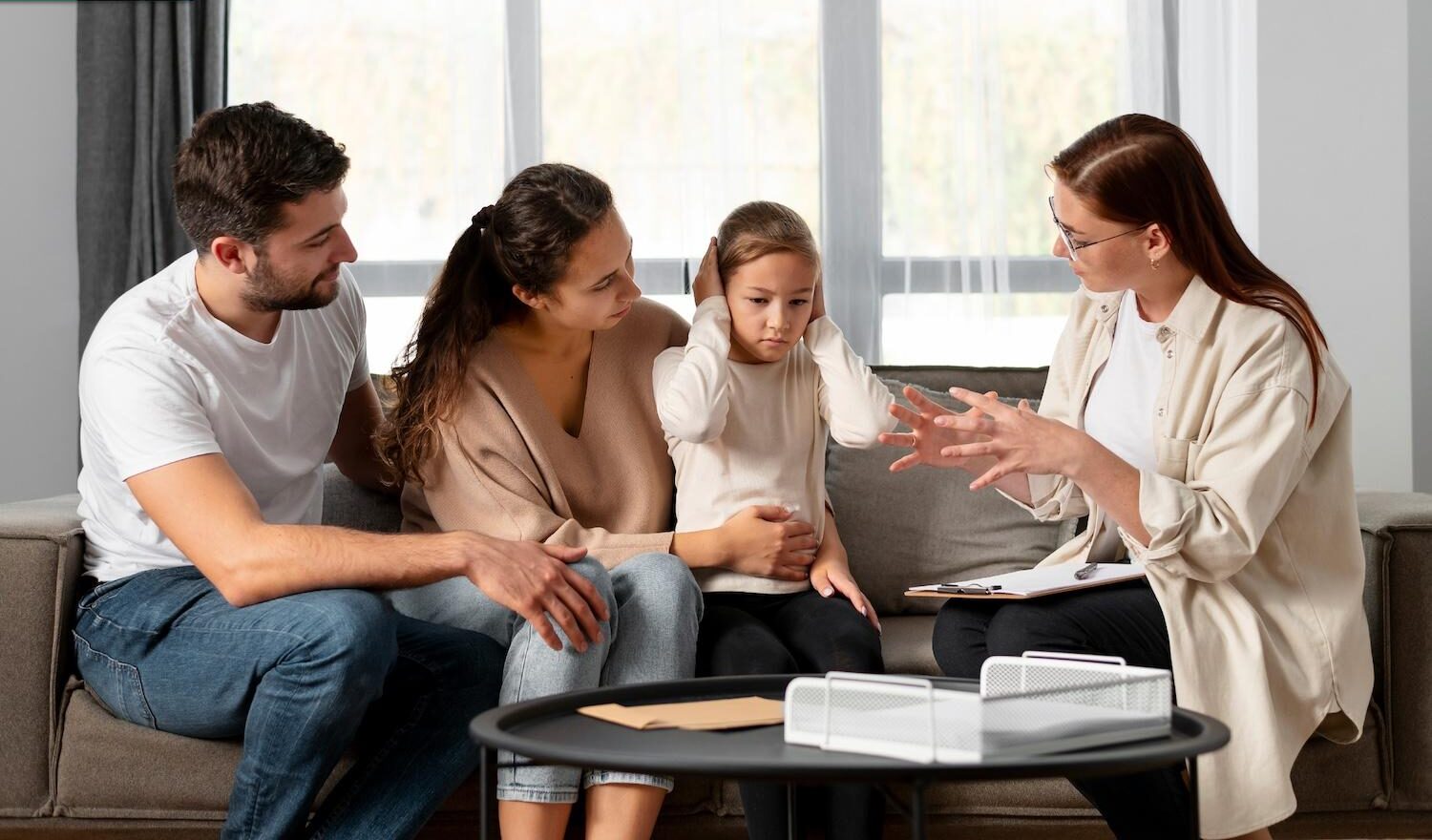Family therapy, also known as family counseling or family systems therapy, is a powerful and effective way to address conflicts and challenges within a family unit. In this article, we will delve into the world of family therapy and explore how it works, its benefits, and why it might be the solution your family needs.
What Is Family Therapy?
Family therapy is a type of psychological counseling that focuses on improving communication and resolving conflicts within families. Additionally, it recognizes that families are systems, and issues within the family often involve multiple members and dynamics. Family therapy aims to help families understand and address these complex interactions. As a result, it can create a more harmonious and supportive environment for all family members.
How Does Family Therapy Work?
Understanding how family therapy works is actually by involving all family members in the therapeutic process. Moreover, a trained family therapist facilitates sessions where family members can express their thoughts, feelings, and concerns in a safe and non-judgmental environment. Now, let’s provide a step-by-step breakdown of how family therapy works:
1. Initial Assessment:
- The first step in family therapy is typically an initial assessment. During this stage, the therapist gathers information about the family’s history, dynamics, and the specific issues they want to address.
- The process of gathering information is central to this process, as it guides the therapist in understanding the family’s unique needs.
2. Setting Goals:
- Once the assessment is complete, the therapist and family members collaboratively set goals for therapy. These goals help focus the sessions and provide a clear direction for the therapeutic process.
- Throughout this stage, it ensures that everyone understands the framework in which they are working.
3. Family Sessions:
- In family therapy, sessions typically involve all family members, although individual sessions may also be recommended.
- The therapist uses various techniques and exercises to promote healthy communication, empathy, and problem-solving skills.
Throughout sessions, it reinforces the purpose of the therapy.
4. Identifying Patterns:
- Family providers help families identify harmful patterns of behavior or communication that contribute to conflicts.
- Recognizing and addressing these patterns is a key aspect of family therapy, and it often leads to breakthroughs in understanding and resolving issues.
5. Communication Skills:
- Learning effective communication skills is a fundamental part of family therapy. Family members are taught how to express themselves openly and listen empathetically.
6. Conflict Resolution:
- Family therapy equips families with tools to resolve conflicts constructively. Instead of avoiding or escalating conflicts, family members learn to address them in a healthy manner.
7. Building Stronger Relationships:
- As family members work together to address issues and improve communication, they often build stronger bonds and a greater sense of unity.
- This unity can be further enhanced by family therapy’s emphasis on understanding and support.
Benefits of Family Therapy:
Family therapy offers a multitude of benefits, including:
- Improved communication within the family.
- Better understanding of each family member’s perspective.
- Enhanced problem-solving skills.
- Reduced conflicts and tensions.
- Increased support and empathy within the family.
- Tools for coping with life’s challenges.
Exploring Different Types of Family Therapy:
Family therapy is a valuable resource for families seeking to improve their relationships and address various issues.
In this article, we will delve into the different types of family therapy to help you understand how they work and which one might be the right fit for your family. These approaches encompass several different techniques, each tailored to specific needs and circumstances.
1. Structural Family Therapy:
Structural family therapy focuses on the family’s structure and organization. Additionally, providers help identify dysfunctional patterns and restructure them to create healthier dynamics. This type of therapy emphasizes clear roles, boundaries, and communication within the family.
2. Strategic Family Therapy:
In strategic family therapy, providers guide families through specific exercises and tasks to address their issues. Moreover, the focus is on finding practical solutions to problems. Consequently, strategies are developed to help families break free from negative patterns and behaviors.
3. Narrative Therapy:
Narrative therapy views problems as separate from the family members and encourages them to reframe their narratives. Furthermore, it helps individuals and families identify and challenge the stories they tell themselves, thus promoting a more positive self-perception and family dynamic.
4. Bowenian Family Therapy:
Bowenian family therapy emphasizes the importance of differentiation, which means being able to separate one’s thoughts and feelings from those of the family. Consequently, the therapist helps family members better understand themselves and their roles in the family system.
5. Systemic Family Therapy:
Systemic family therapy focuses on how individuals are interconnected within the family system. Additionally, it seeks to address issues by examining how they affect and are affected by various family members. As a result, this approach aims to create a balanced and harmonious family system.
6. Cognitive-Behavioral Family Therapy:
Cognitive-behavioral family therapy combines cognitive and behavioral techniques to address problems effectively. Furthermore, it helps families identify and change negative thought patterns and behaviors, promoting more adaptive ways of interacting within the family unit.
7. Emotionally Focused Therapy (EFT):
Emotionally focused therapy is rooted in attachment theory. Furthermore, it helps families understand and express their emotions in healthier ways. As a result, EFT aims to create secure emotional bonds within the family, creating stronger connections and more positive interactions among family members.
8. Multigenerational Family Therapy:
This approach examines how patterns and dynamics are passed down, looking at family issues across generations. Additionally, providers help families break free from multigenerational patterns that may contribute to their current problems. By addressing these deep-rooted patterns, families can work towards resolving issues and building healthier relationships.
9. Communication-Based Family Therapy:
Communication-based family therapy focuses on improving family communication patterns. Moreover, it equips family members with effective communication skills, allowing them to express themselves more openly and empathetically. This enhanced communication fosters healthier family dynamics and relationships.
10. Solution-Focused Brief Therapy:
Solution-focused brief therapy is a short-term approach that concentrates on finding solutions rather than dwelling on problems. Families work with providers to identify their strengths and develop practical strategies for improvement.
In conclusion, family therapy is a highly effective way to address conflicts and challenges within a family. By emphasizing open communication, conflict resolution, and understanding, it helps families create a more harmonious and supportive environment. Moreover, if your family is facing difficulties, consider exploring the world of family therapy to bring about positive change and healing.
Furthermore, remember that family therapy is not just a buzzword; it’s a proven approach to fostering healthier family relationships and resolving issues that can lead to happier and more fulfilling family lives.




